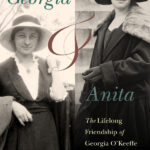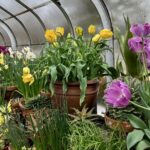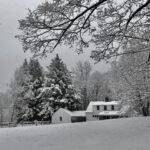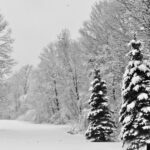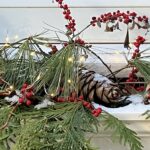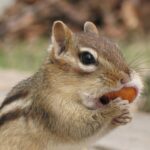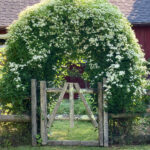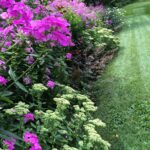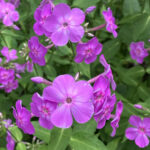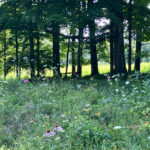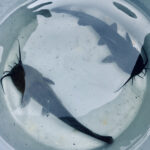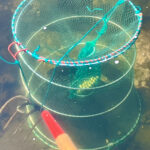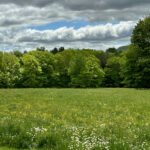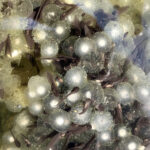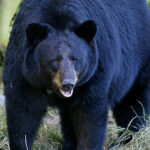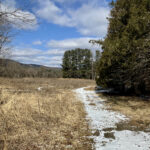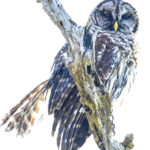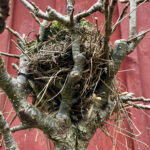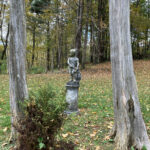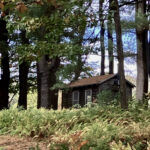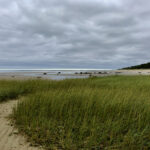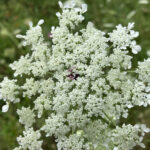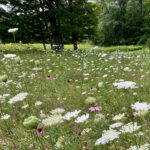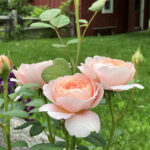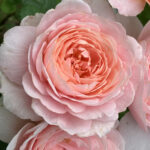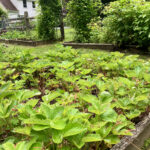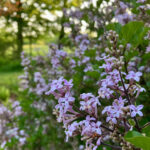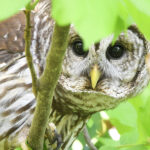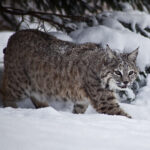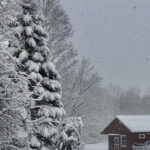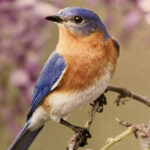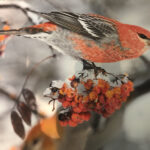 It’s been an oddly snowless winter in the Berkshires this year. The storm that is barreling up the coast will bypass us for the most part. All remains quiet, the ground a patchwork of tired brown and white. But winter is a state of mind as much as anything, a season of inwardness and contemplation. And so I woke this morning, thinking of this poem by the prolific and versatile American poet William Jay Smith who died this past year at the age of 97. Continue reading
It’s been an oddly snowless winter in the Berkshires this year. The storm that is barreling up the coast will bypass us for the most part. All remains quiet, the ground a patchwork of tired brown and white. But winter is a state of mind as much as anything, a season of inwardness and contemplation. And so I woke this morning, thinking of this poem by the prolific and versatile American poet William Jay Smith who died this past year at the age of 97. Continue reading
Winter Morning
Angel Slices — the most heavenly of Christmas cookies
 When I left home after college, my mother gave me two books which I think she believed would fully equip me for life on my own: The Holy Bible and Irma Rombauer’s original edition of The Joy of Cooking. In those days I wasn’t much of a cook — and even less of a baker. So I was lucky to stumble upon a particular recipe at the very start of my baking career. It was in The Joy of Cooking for a bar cookie called Angel Slices. Continue reading
When I left home after college, my mother gave me two books which I think she believed would fully equip me for life on my own: The Holy Bible and Irma Rombauer’s original edition of The Joy of Cooking. In those days I wasn’t much of a cook — and even less of a baker. So I was lucky to stumble upon a particular recipe at the very start of my baking career. It was in The Joy of Cooking for a bar cookie called Angel Slices. Continue reading
Paris — a love story
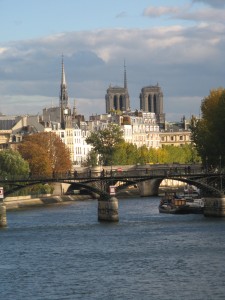 Along with so many others, I’ve been in love with Paris for as long as I can remember. I lived with Madeline “in an old house in Paris that was covered in vines” and I was there with Gigi “the night they invented champagne.” Victor Hugo, Colette, Hemingway, Gertrude Stein, Fitzgerald, they all added to the grand city that began to take hold in my imagination. A place of glowing interiors — Degas’ ballet studios and Vuillard’s wall-papered living rooms — and sweeping grandeur — Seurat’s public parks and Pissaro’s wide boulevards. I danced with Gene Kelly and turned a tearful face away from Bogart at the Gare de Lyon. A little later, I found myself torn between Jules and Jim. Continue reading
Along with so many others, I’ve been in love with Paris for as long as I can remember. I lived with Madeline “in an old house in Paris that was covered in vines” and I was there with Gigi “the night they invented champagne.” Victor Hugo, Colette, Hemingway, Gertrude Stein, Fitzgerald, they all added to the grand city that began to take hold in my imagination. A place of glowing interiors — Degas’ ballet studios and Vuillard’s wall-papered living rooms — and sweeping grandeur — Seurat’s public parks and Pissaro’s wide boulevards. I danced with Gene Kelly and turned a tearful face away from Bogart at the Gare de Lyon. A little later, I found myself torn between Jules and Jim. Continue reading
Hard frost
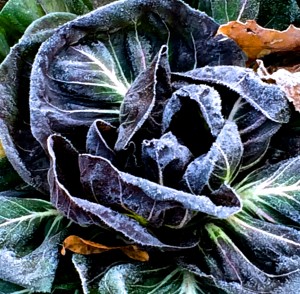 The temperature dipped into the twenties in the Berkshires the other night, and we woke to a world glazed in white. Though beautiful from the window, up close you could see the devastation wreaked on anything still growing: shriveled stalks and drooping heads. Each hard frost is like a stroke — a shock to nature’s cellular system — and this one seemed to be the final blow.
The temperature dipped into the twenties in the Berkshires the other night, and we woke to a world glazed in white. Though beautiful from the window, up close you could see the devastation wreaked on anything still growing: shriveled stalks and drooping heads. Each hard frost is like a stroke — a shock to nature’s cellular system — and this one seemed to be the final blow.
The crystalline skies the night before actually served as something of a frost warning. Without a blanket of cloud cover, Continue reading
The end of summer
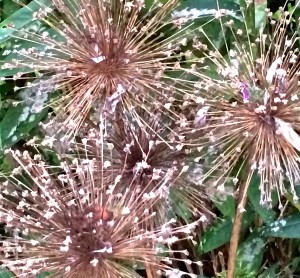 It still feels summery in the Berkshires, though there are signs of change everywhere. Most of the butterflies and many of the birds have already started their long journeys south. A family of strident blue jays has taken up residence in the willow which the hummingbirds leased during the summer. As dawn was breaking this morning, I heard the plaintive call of the barred owl in the woods: “Who cooks for you? Who cooks for you-all?” But, for the most part, the mornings are much quieter now, except for the refrigerator-like hum of crickets and cicadas. Continue reading
It still feels summery in the Berkshires, though there are signs of change everywhere. Most of the butterflies and many of the birds have already started their long journeys south. A family of strident blue jays has taken up residence in the willow which the hummingbirds leased during the summer. As dawn was breaking this morning, I heard the plaintive call of the barred owl in the woods: “Who cooks for you? Who cooks for you-all?” But, for the most part, the mornings are much quieter now, except for the refrigerator-like hum of crickets and cicadas. Continue reading
It’s a bird!
Here′s a guest post that I hope will add a smile to these last bittersweet days of summer:
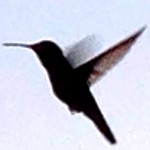 Walking along a Berkshire country road the other day, whom should I bump into but the god-like ornithologist Bert Humbert, whose colleagues have long believed that his eye is always on the hummingbird even if the hummingbird has yet to fall.
Walking along a Berkshire country road the other day, whom should I bump into but the god-like ornithologist Bert Humbert, whose colleagues have long believed that his eye is always on the hummingbird even if the hummingbird has yet to fall.
“Professor,” I said, “I see you’ve been taken to task by the Scandinavian magazine Hohumn for denying that a reclassification of hummingbird sexuality is long overdue.” Continue reading
The Healing Power of Echinacea
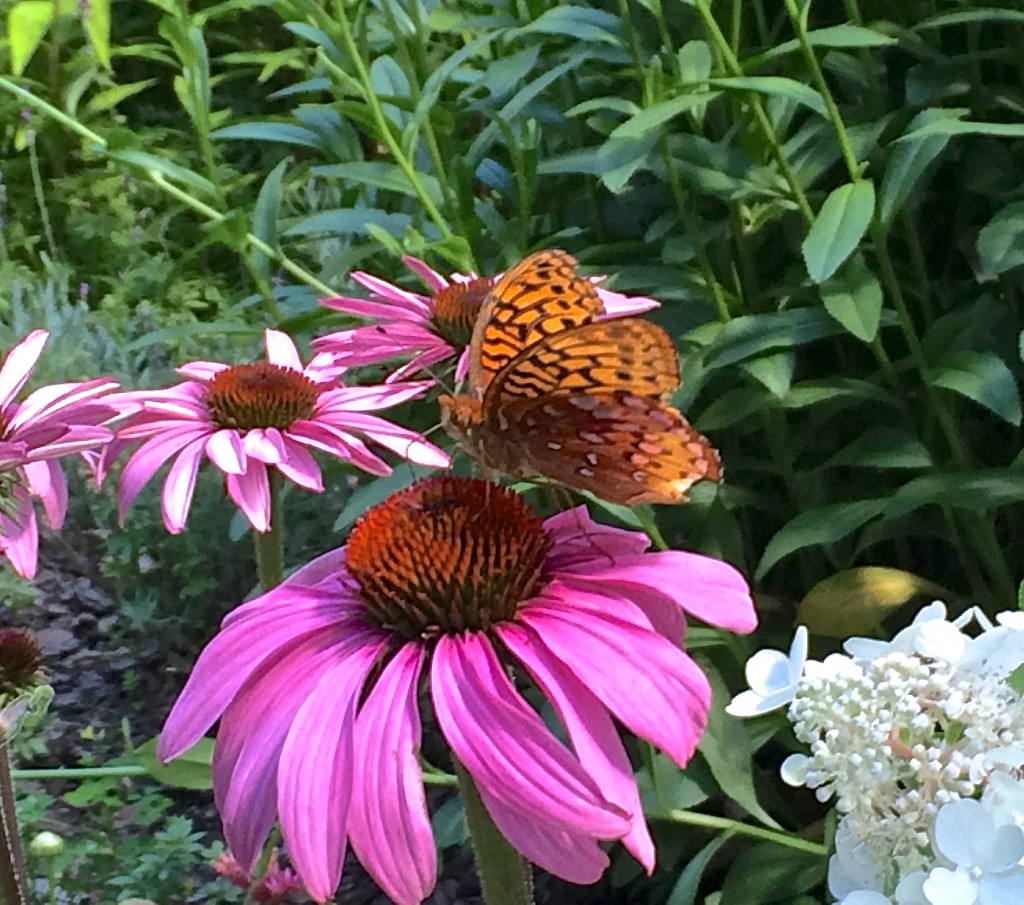 My echinacea is in its glory now, a couple of weeks early, as are so many flowering plants and shrubs in the Berkshires this summer. This beautiful North American native — also known as purple cone flower — is a magnet for butterflies, bees, and dragonflies. It was first employed by the Great Plains Indian tribes as an herbal remedy and later adopted for medicinal use by the settlers. In the first half of the 20th Century it was actually listed in the U. S. National Formulary as a remedy for colds and flu. With the introduction of antibiotics, echinacea fell out favor with mainstream medicine, though it’s always remained a mainstay of alternative healing. Today, however, with the frightening rise of antimicrobial resistance to antibiotics, the scientific community is once again taking a look at the natural healing power of echinacea. Continue reading
My echinacea is in its glory now, a couple of weeks early, as are so many flowering plants and shrubs in the Berkshires this summer. This beautiful North American native — also known as purple cone flower — is a magnet for butterflies, bees, and dragonflies. It was first employed by the Great Plains Indian tribes as an herbal remedy and later adopted for medicinal use by the settlers. In the first half of the 20th Century it was actually listed in the U. S. National Formulary as a remedy for colds and flu. With the introduction of antibiotics, echinacea fell out favor with mainstream medicine, though it’s always remained a mainstay of alternative healing. Today, however, with the frightening rise of antimicrobial resistance to antibiotics, the scientific community is once again taking a look at the natural healing power of echinacea. Continue reading
The Wildflower Field
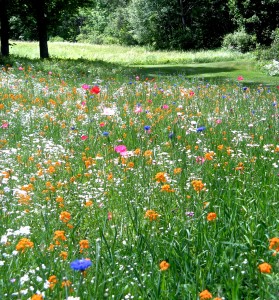 Our house came with a field of wildflowers. There were mostly daisies that first summer. Then fewer daisies the next. It took me a few years to realize that you need to reseed every five years or so, especially after golden rod insinuates itself into the mix — like a stealth army — and soon has literally rooted out everything else. Then it’s time to mow, kill the old turf, plow under the field, and replant with new seeds. Continue reading
Our house came with a field of wildflowers. There were mostly daisies that first summer. Then fewer daisies the next. It took me a few years to realize that you need to reseed every five years or so, especially after golden rod insinuates itself into the mix — like a stealth army — and soon has literally rooted out everything else. Then it’s time to mow, kill the old turf, plow under the field, and replant with new seeds. Continue reading
Arachnophobia
I’m not alone in hating spiders. According to the Statistic Brain Research Institute arachnophobia ranks third — right behind fear of public speaking and fear of death — among the country’s top phobias. Approximately 30 percent of all Americans are plagued by it. I won’t go into detail about when my fear of arachnids began — though it involved my first night away from home and a top bunk inches from a ceiling where I was told “all the spiders lived” — but I still recoil at the mere suggestion of anything with eight legs. Continue reading
In Praise of Allium
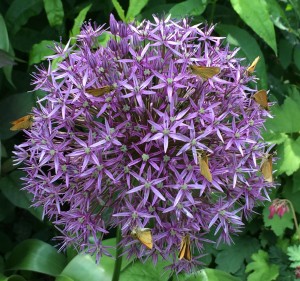 I planted Globemaster alliums three or four years ago. They’re the largest and most majestic plant from the ornamental side of the large allium family which includes chives, onions, shallots, leeks, and hundreds of wild and cultivated species. (Not surprisingly, allium is the Latin word for garlic.) In full bloom, Globemasters form 6 to 8-inch perfectly rounded heads which look like purple scepters reigning over the late spring garden. This year was a particularly good one for alliums — with the chives running rampant through the vegetable garden — and the Globemasters coming into their glory in late May and holding their color and shape right up until now. Continue reading
I planted Globemaster alliums three or four years ago. They’re the largest and most majestic plant from the ornamental side of the large allium family which includes chives, onions, shallots, leeks, and hundreds of wild and cultivated species. (Not surprisingly, allium is the Latin word for garlic.) In full bloom, Globemasters form 6 to 8-inch perfectly rounded heads which look like purple scepters reigning over the late spring garden. This year was a particularly good one for alliums — with the chives running rampant through the vegetable garden — and the Globemasters coming into their glory in late May and holding their color and shape right up until now. Continue reading
Tulips
 It’s been another passive-aggressive spring in southern New England. Showing up weeks late, spring arrived in a tremendous rush this year — trailing swarms of insects and rapidly pushing the temperatures up into the eighties. The daffodils and tulips which had been dozing under a blanket of snow were shaken rudely awake and forced into flower almost overnight. As a result, my spring bulbs which usually are given the chance to take individual turns on the red carpet had to share the spotlight this year with all the other beauties. Continue reading
It’s been another passive-aggressive spring in southern New England. Showing up weeks late, spring arrived in a tremendous rush this year — trailing swarms of insects and rapidly pushing the temperatures up into the eighties. The daffodils and tulips which had been dozing under a blanket of snow were shaken rudely awake and forced into flower almost overnight. As a result, my spring bulbs which usually are given the chance to take individual turns on the red carpet had to share the spotlight this year with all the other beauties. Continue reading
Fox
 One grey day in the frozen depths of winter, I saw a flash of gold in the woods behind our place: fox! It moved with a wonderful fluidity and sense of purpose, but wary and close to the ground. Later, my husband thought he saw it again —disappearing down the old woodchuck hole in the underbrush — but then months went by without another sighting. Continue reading
One grey day in the frozen depths of winter, I saw a flash of gold in the woods behind our place: fox! It moved with a wonderful fluidity and sense of purpose, but wary and close to the ground. Later, my husband thought he saw it again —disappearing down the old woodchuck hole in the underbrush — but then months went by without another sighting. Continue reading
Galway Kinnell
 Galway Kinnell, one of America’s most honored and beloved poets, died last October at the age of 87. He was a physically imposing man — with a tough-guy face that belied a gentle and generous nature. He believed that the job of poets was to bear witness. “To me,” he said, “poetry is somebody standing up, so to speak, and saying, with as little concealment as possible, what it is for him or her to be on earth at this moment.” Continue reading
Galway Kinnell, one of America’s most honored and beloved poets, died last October at the age of 87. He was a physically imposing man — with a tough-guy face that belied a gentle and generous nature. He believed that the job of poets was to bear witness. “To me,” he said, “poetry is somebody standing up, so to speak, and saying, with as little concealment as possible, what it is for him or her to be on earth at this moment.” Continue reading
The Wonders of Witch Hazel
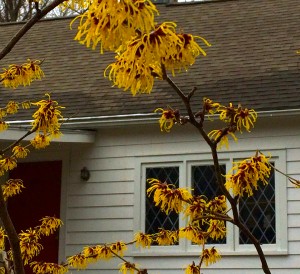 My witch hazel shrub is flowering — the blooms flamboyant bursts of yellow and red, like miniature pom poms, cheering on springtime’s long-delayed kick-off. Besides an almost imperceptible blur of red in the underbrush and a shimmer of gold among the willow wands, it’s the only bright color in our otherwise stubbornly monotone landscape. Witch hazels are native to America and perfectly at home in our rocky and unwelcoming southern New England soil. I planted mine four years ago in a hard-to-fill spot at the back of the long border —with too much shade and in dicey proximity to a stand of mature trees — but it’s settled in nicely without complaint or obvious problems. Continue reading
My witch hazel shrub is flowering — the blooms flamboyant bursts of yellow and red, like miniature pom poms, cheering on springtime’s long-delayed kick-off. Besides an almost imperceptible blur of red in the underbrush and a shimmer of gold among the willow wands, it’s the only bright color in our otherwise stubbornly monotone landscape. Witch hazels are native to America and perfectly at home in our rocky and unwelcoming southern New England soil. I planted mine four years ago in a hard-to-fill spot at the back of the long border —with too much shade and in dicey proximity to a stand of mature trees — but it’s settled in nicely without complaint or obvious problems. Continue reading



